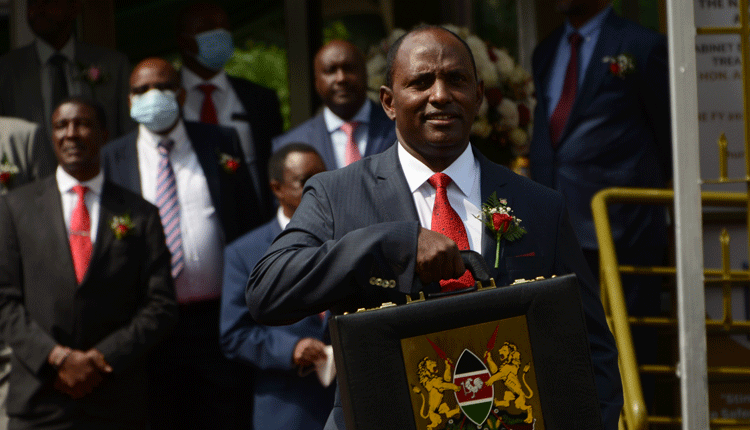All eyes on public debt level as audit kicks off

Office of the Auditor-General has commenced the audit of the country’s real debt numbers in a process that promises to once again put on the spot figures by National Treasury over the accuracy of the loan numbers it has been reporting.
In her submission to Senate Committee on Finance and Budget, Nancy Gathungu, sworn in as the Auditor General in July last year confirmed that her office had already obtained preliminary records on public debt as at June 30, 2021 and would commence the process forthwith.
“The Office finalised the audit of the statement of public debt as of June 30, 2020. However, we are in the planning stage of the audit and the current audit cycle is set to begin October 1 after the statutory deadline for submission of financial statements by all public institutions, the National Treasury included,” she said.
It is a process that promises to shed more light on the country’s real and near accurate public debt situation that continues to divide economists and financial experts.
More so it is likely to place Gathungu in an awkward position with National Treasury Cabinet Secretary Ukur Yatani whose office has previously been blamed for giving inaccurate figures on Kenya’s public debt.
Available figures by the two institutions that operate autonomously show that the outstanding amount of public debt of Sh7.6 trillion as at June 30, 2021, or 84 per cent of the maximum ceiling of Sh9 trillion which was approved by Parliament through Legal Notice No.155 of September 26, 2019.
The current debt figures show a consistent rise in the amounts the country has been accumulating in loans and grants.
Between the financial years 2015/2016 and 2020/2021 for instance, Kenya’s debt over the last six years has more than tripled by 125 per cent from Sh3.4 trillion reported in the year 2015/16 to the current Sh 7.6 trillion reported as at June this year. This is an increase of Sh4.2 trillion during that period.
During that period the expenditure on public debt increased from Sh421,457,575,047 reported in 2015/2016 to Sh867, 279,586,755 incurred in the 2020/2021 financial year.
Consolidated fund services
Equally, debt servicing through the consolidated fund services has skyrocketed to Sh795,665,888,344 comprised Sh704,789,802,097 which is a 88.6 percent for public debt, Sh87,568,675,632 or 11 per cent for pension and gratuities, Sh3,307,410,615 or 0.4 per cent for salaries to civil servants, allowances and miscellaneous services.
Further analysis on budget absorption on public debt indicates an under absorption of Sh74,058,090,060 from the budgeted amount of Sh778,847,892,157 and the actual amount of Sh704,789,802,097, in what the auditor general has fingered Yatani’s office for the inconsistencies.
“I have also raised various issues pertaining to the maintenance of the public debt records and unexplained variances between various records for the year 2019/2020,” she said in her presentation.
This among other unexplained expenditures include mysterious variance of Sh.2 billion between the internal loans – short-term borrowing balance of Sh887,141,500,000 reflected in the summary statement of public debt and the re-computed closing balance of Sh885,141,500,000.
“The over-redemption of Sh2 billion was not acknowledged by the Central Bank of Kenya and may therefore not be recoverable,” read her submission.
Kenya’s growth in public debt is attributed to disbursements of new loans to the Government by various Development Partners and additional borrowings from the domestic market through Treasury Bonds and Treasury Bills to fund the budget.















